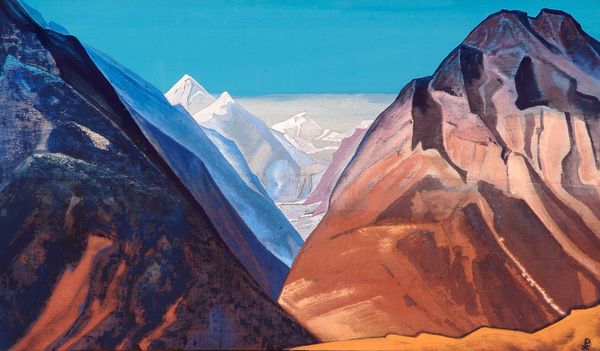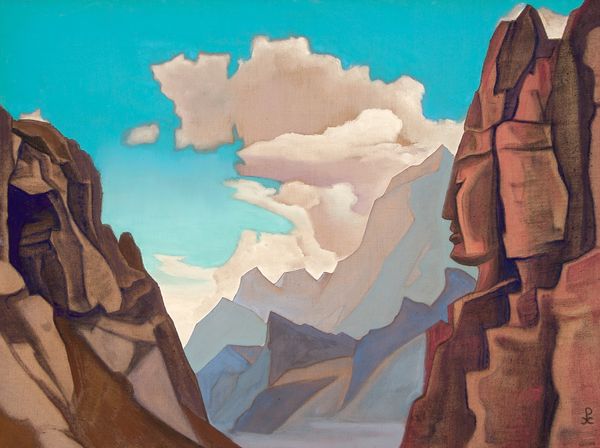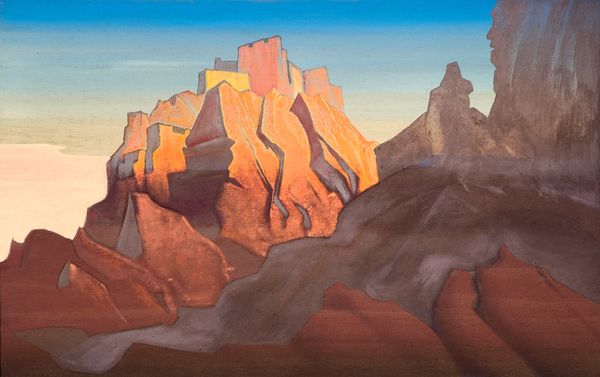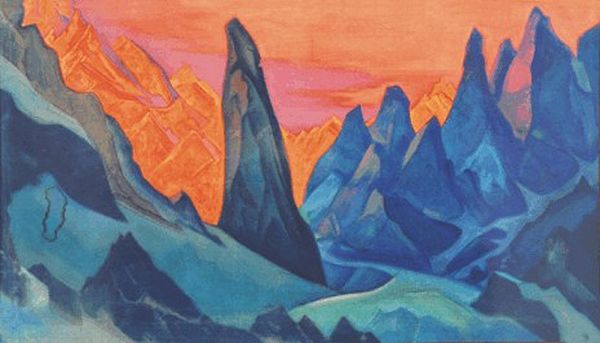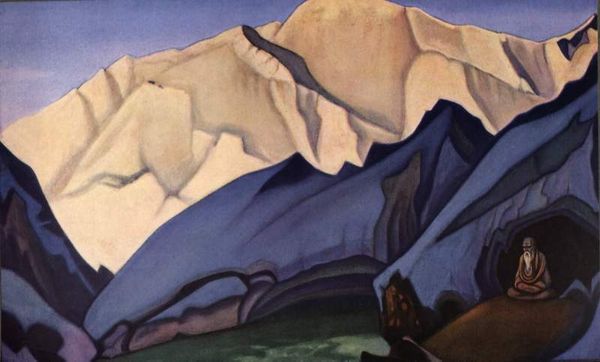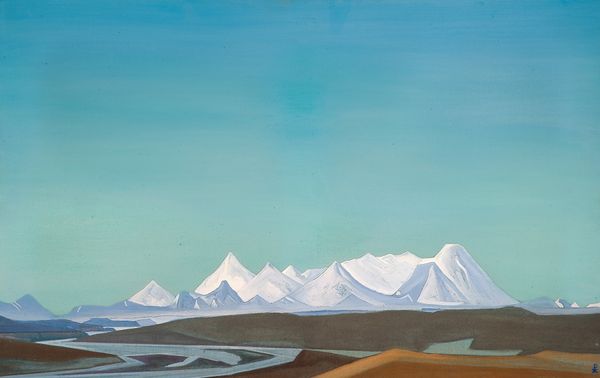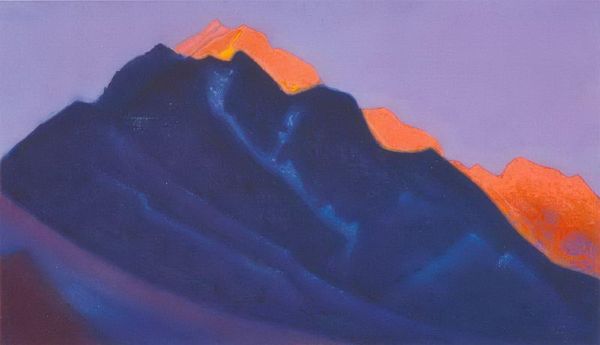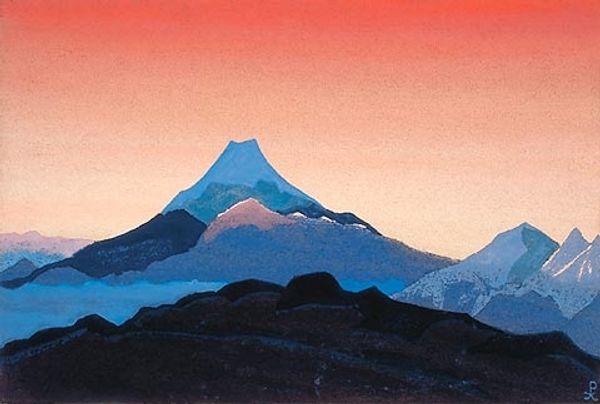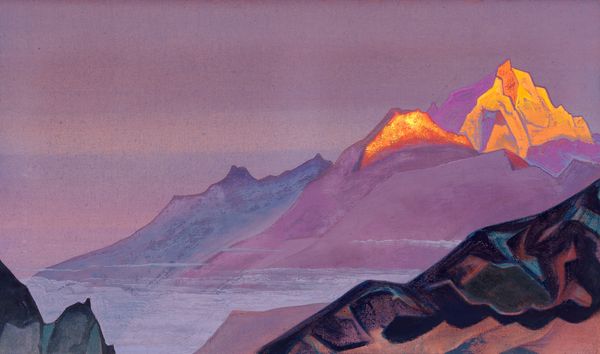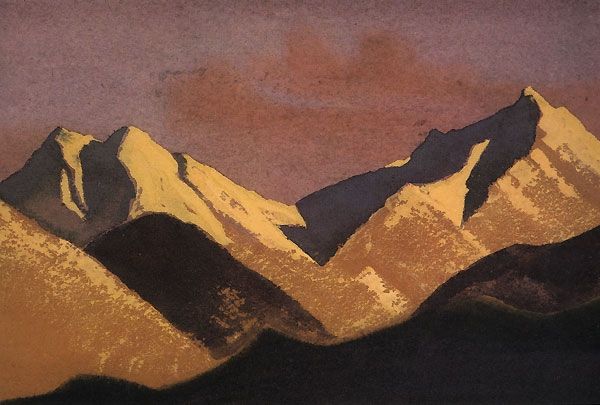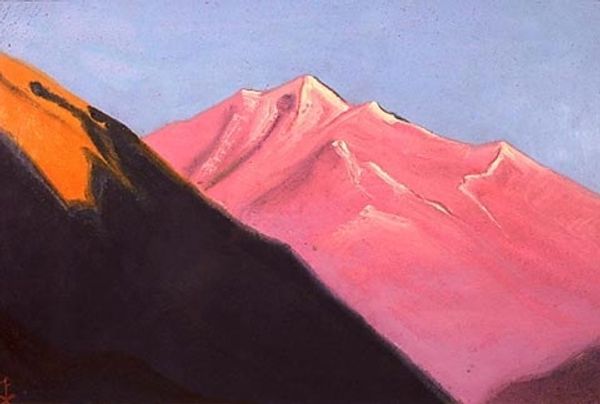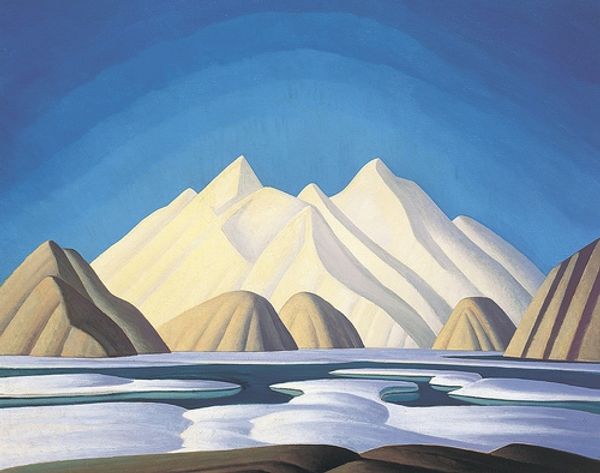
Copyright: Public domain
Editor: Here we have Nicholas Roerich’s "Sunset," painted in tempera in 1933. The mountain peaks are rendered in these striking oranges, reds and purples, contrasting sharply with the dark, almost bruised, foreground. How do you approach a work like this from a formalist perspective? Curator: Indeed, a work demanding scrutiny of its formal elements. First, consider the composition. Roerich has created a strong diagonal thrust, leading the eye from the lower right towards the vibrant peaks. Note how this is achieved not just through form, but also value contrast. We move from dark foreground to the brightest area in the painting – a calculated crescendo. How do you interpret that specific colour palette and application of paint? Editor: Well, the tempera application appears deliberately flat and matte, and the colours, while bold, are somewhat contained within defined contours. It’s representational, but abstracted to the point of emotional expression rather than strict realism. Curator: Precisely. The Russian Avant-Garde prioritized abstraction in the service of communicating an intense emotional reality. We could read the limited blending of colours as reinforcing that emotional immediacy. What about the brushstrokes? Editor: I see what appears to be layering of colours in parallel strokes; the brushwork reinforces the angularity of the peaks. It gives them a palpable sense of energy, rather than quiet contemplation that, say, Romantic landscapes might offer. Curator: An important observation. It brings the viewer into the immediacy of the depicted moment, of the creative process itself, rather than acting solely as a window onto another time or place. Editor: I learned a lot about breaking the components to find the underlying purpose! Curator: A rewarding journey, discovering structure, meaning, and feeling synthesized within the canvas.
Comments
No comments
Be the first to comment and join the conversation on the ultimate creative platform.
